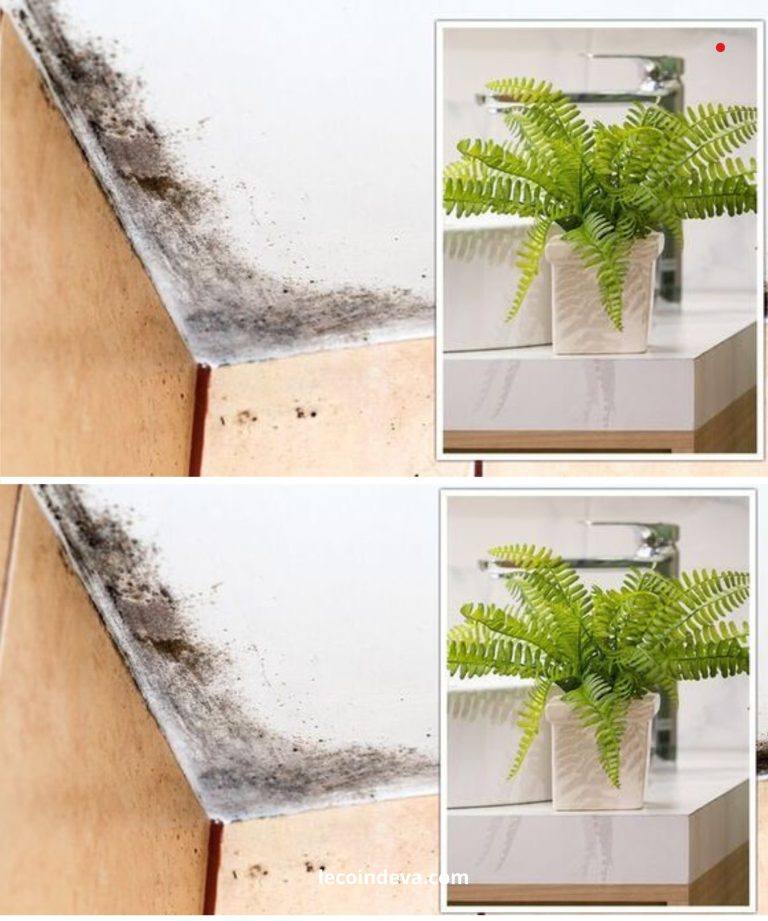Black mold, scientifically known as Stachybotrys chartarum, is a dangerous type of fungus that thrives in damp, warm, and poorly ventilated areas of the home, such as bathrooms. It can cause a host of health issues, from respiratory problems and allergies to more severe conditions when left unchecked. While proper cleaning and ventilation are the most direct ways to combat mold growth, certain houseplants can also help fight mold by purifying the air and absorbing moisture.
This article will explore five houseplants that not only add beauty to your bathroom but also serve as natural allies against mold by reducing the moisture in the air and promoting a healthier environment.
While plants are beneficial for maintaining a mold-free environment, it is essential to remember that they cannot completely eliminate mold. Regular cleaning, proper ventilation, and maintenance are key to preventing mold growth. However, with the right plants, you can reduce the likelihood of mold forming on your bathroom walls, improve air quality, and enjoy the many other benefits that come with having plants in your home.
Let’s take a closer look at five houseplants that can help combat black mold and enhance the overall atmosphere of your bathroom and home.
1. Spider Plant (Chlorophytum comosum)
The spider plant is a popular choice for many homeowners, and it’s easy to see why. This low-maintenance plant is known for its ability to purify the air by removing harmful chemicals like formaldehyde, xylene, and toluene. These are some of the most common pollutants found in indoor air, and their presence can worsen respiratory conditions, which in turn can make mold problems more severe.
How It Helps with Mold: Spider plants do not directly fight mold, but they improve the air quality by reducing pollutants, which can encourage the growth of mold. By reducing the number of airborne toxins in the bathroom, spider plants help create a less favorable environment for mold and mildew.
Care Tips: Spider plants thrive in indirect light and prefer slightly moist soil. They are relatively easy to care for, making them an ideal plant for bathrooms that might lack natural light. These plants are also forgiving and can tolerate neglect, making them an excellent choice for beginner gardeners.
2. Snake Plant (Sansevieria trifasciata)
The snake plant, also known as the mother-in-law’s tongue, is another fantastic option for bathrooms. It is famous for its hardiness and ability to thrive in a variety of conditions. Snake plants are particularly effective at removing harmful indoor air pollutants like formaldehyde and benzene, both of which are commonly found in bathrooms and can contribute to poor air quality.
How It Helps with Mold: Snake plants absorb carbon dioxide at night and release oxygen, promoting better ventilation in the bathroom, which in turn reduces the humidity levels that mold thrives in. Additionally, by cleaning the air of chemicals, the snake plant helps to create a healthier environment overall, limiting mold growth.
Care Tips: Snake plants are incredibly easy to take care of and can tolerate low light, making them a great choice for bathrooms with limited natural light. They prefer to be watered infrequently, so it is essential to avoid overwatering, as this can lead to root rot and potentially encourage mold growth in the plant itself.
3. Boston Fern (Nephrolepis exaltata)
Boston ferns are known for their lush, feathery fronds and air-purifying abilities. These plants are especially effective at removing pollutants like formaldehyde and xylene from the air, which can cause respiratory problems if present in large quantities. Boston ferns also have a high transpiration rate, which means they release a significant amount of moisture into the air. This feature helps balance the humidity levels in your bathroom and prevents the air from becoming too dry or too damp—two conditions that can contribute to mold growth.
How It Helps with Mold: By releasing moisture and maintaining a steady humidity level, Boston ferns help regulate the overall air quality and moisture balance in your bathroom. Their ability to reduce airborne toxins also creates an environment less conducive to mold growth.
Care Tips: Boston ferns thrive in humid environments, making them a perfect fit for the bathroom. They require indirect light and consistently moist soil to flourish. To keep them healthy, you should mist the fronds regularly and ensure that the soil does not dry out. Additionally, Boston ferns are fairly low-maintenance but should be kept away from direct sunlight to prevent their fronds from wilting.
4. Aloe Vera (Aloe barbadensis miller)
Aloe vera is a well-known plant thanks to its soothing and healing properties. In addition to its many skincare benefits, aloe vera also has natural antifungal properties, making it an excellent plant to combat mold in bathrooms. Aloe vera plants help reduce the spread of mold and mildew by promoting better air quality and moisture regulation.
How It Helps with Mold: Aloe vera’s antifungal properties can help to inhibit mold growth in the bathroom. Additionally, aloe vera is effective at purifying the air by removing toxins such as formaldehyde and benzene, creating a cleaner environment for your home.
Care Tips: Aloe vera plants prefer bright, indirect light, so placing them on a bathroom windowsill where they can receive sunlight for a few hours a day is ideal. Aloe vera plants need well-drained soil, so make sure their pot has drainage holes. They are drought-tolerant and do not need frequent watering, making them a low-maintenance option for your bathroom.
5. Golden Pothos (Epipremnum aureum)
Golden pothos is a trailing vine that is not only beautiful but also one of the best plants for purifying the air. This plant is known for its ability to remove harmful chemicals like formaldehyde and carbon monoxide from the air. Because pothos thrive in low-light conditions, they are perfect for bathrooms that may not have access to natural light.
How It Helps with Mold: Golden pothos absorb moisture from the air and help maintain a balance in humidity levels. They also improve air quality, which indirectly reduces the chances of mold forming in your bathroom. By removing harmful pollutants from the air, golden pothos promote a healthier living environment overall.
Care Tips: Golden pothos are very low-maintenance and can tolerate a range of lighting conditions. They prefer moist soil but can tolerate drying out between waterings. Pothos plants are especially effective when hung in baskets or placed on high shelves where they can cascade down, giving your bathroom an attractive, tropical look.
Benefits of Having Houseplants in the Bathroom
In addition to helping combat mold, houseplants provide many other benefits that enhance the overall well-being of your home. Here are some of the key advantages of having plants in the bathroom:
1. Air Purification
Plants act as natural air purifiers by removing pollutants and toxins like formaldehyde, benzene, and xylene from the air. These pollutants are commonly found in indoor environments and can have adverse health effects. By improving the air quality, plants help promote better respiratory health and reduce allergy symptoms.
2. Increased Humidity
Many plants, especially those in humid environments like bathrooms, release moisture into the air through a process called transpiration. This helps increase the humidity in the room, preventing dry skin, nose, and throat. Adequate humidity levels also reduce the likelihood of cracks and damage to wooden furniture and fixtures in the bathroom.
3. Reduced Stress and Improved Mood
Studies have shown that spending time around plants can reduce stress and improve mental well-being. Plants can create a calming atmosphere and bring a touch of nature indoors, contributing to a more relaxing and pleasant environment.
4. Aesthetic Appeal
Plants are a great way to enhance the aesthetics of your bathroom. They bring color, texture, and natural beauty to your space, making it feel more inviting and comfortable. The presence of greenery also helps create a spa-like atmosphere that promotes relaxation.
5. Increased Productivity
In addition to reducing stress, plants have been shown to improve focus, concentration, and productivity. This can be particularly useful in bathrooms that are part of a home office or in spaces where you need to focus on self-care routines.
Final Thoughts
While no plant can completely prevent mold from growing in your bathroom, incorporating the right houseplants can significantly reduce the chances of mold and mildew developing. Plants like the spider plant, snake plant, Boston fern, aloe vera, and golden pothos are all excellent choices for improving air quality, regulating humidity, and creating a mold-free environment.
It’s essential to combine plant care with regular cleaning, proper ventilation, and moisture management in order to keep your bathroom and walls mold-free. With the right plants and proper maintenance, you can transform your bathroom into a healthier, more pleasant place to relax and unwind.





